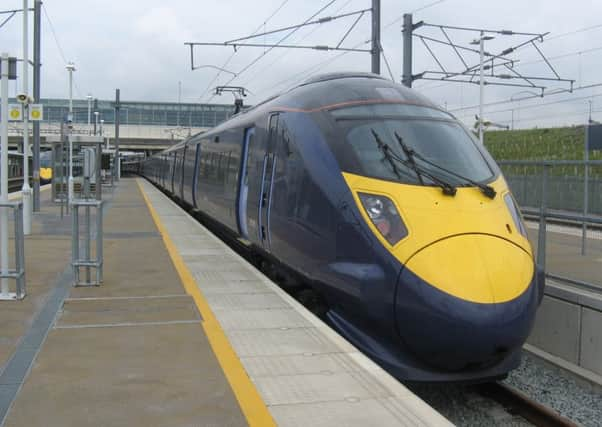Alastair Dalton: No sign of fast tracking Scots high-speed rail


If you looked hard, it was to be found buried as a footnote to the announcement.
To recap, this was the research that the then-infrastructure secretary Nicola Sturgeon launched four years ago “to bring high speed rail to Scotland by 2024”.
Advertisement
Hide AdAdvertisement
Hide AdClearly angry at the UK government’s lethargy towards extending its HS2 line to Scotland, she declared: “We will not wait for Westminster to bring high speed rail to us.”
However, as both reports this week made clear, that’s exactly what is likely to happen.
Why? Because – surprise, surprise – the Edinburgh-Glasgow report concluded that the benefits would be insufficient to cover the “very high cost” of building a free-standing scheme. It may happen, eventually – but only as part of a Y-shaped line with a connection to the south somewhere like Carstairs.
Again, you have to search the report to find out the scale of that cost. The figures are so well hidden (in a table on page 25) that I had to check with officials that I’d found them.
They are estimated to be between £1.6 billion and £10.3bn – in other words, up to 13 times as much as the current £750 million upgrading of the main line between the cities.
That would produce a 28-minute journey time compared with the current 50 minutes, which is due to be reduced to 42 minutes in 2019, and after a potential further work, to 37 minutes.
It is true that a separate high-speed line would also add more seats, but the present six-carriage trains are to be increased to eight in a couple of years.
In addition, as I revealed in Scotland on Sunday in January, there are proposals for the current four trains an hour to be stepped up to six with some further track improvements.
Advertisement
Hide AdAdvertisement
Hide AdNow that the SNP’s 2012 pronouncement appears to have been confirmed as hollow posturing, the question is, if not in 2024, when will Scotland get high-speed rail?
On the positive side, Scottish ministers seem to have successfully persuaded their UK counterparts to agree to the “ultimate aim” of cutting journey times between Edinburgh/Glasgow and London to three hours.
On the face of it, that’s some achievement, since the Westminster government has been decidedly non-committal in the past. They perhaps realise the promised three hours 38 minutes journey time when HS2 reaches northern England in 2033 is no great shakes when Edinburgh-London trains will routinely take only four hours in two years’ time.
The difficult bit is devising a way to make the objective happen – along with finding the money to do so.
Monday’s joint report by the two governments said it could cost £17bn-£43bn, with a range of “broad options” from high-speed bypasses of slow sections of the existing east or west coast main lines to a brand new route.
I’m told there is currently no deadline for making a choice, but “further work” is due to follow next year, with “implementation from 2019 onwards”.
How the scheme is funded is also far from clear. What it does do, however, is add another huge bill to Scotland’s transport budget, already strained from the cost of massive schemes like the £3bn cost of dualling the A9 by 2025, and a further £3bn for the A96 by 2030.